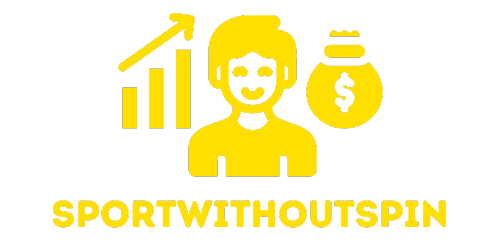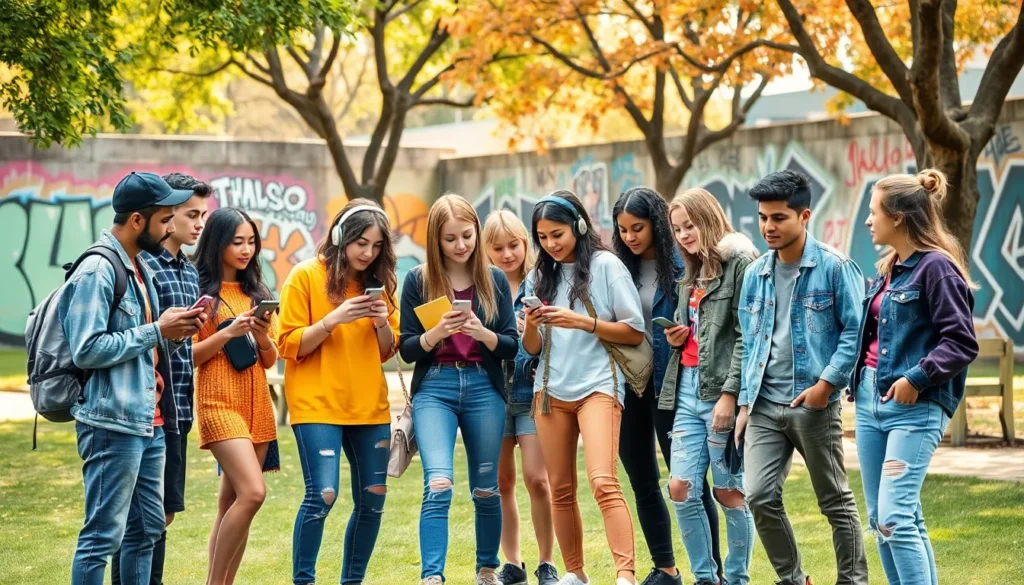Teen culture is a vibrant tapestry woven from shared experiences, interests, and influences that shape the lives of young people today. It encompasses everything from fashion and music to social media trends and activism. As teens navigate this dynamic landscape, they create unique identities that often challenge societal norms and expectations.
Understanding teen culture is crucial for parents, educators, and marketers alike. It provides insights into the values and behaviors that define this generation. As technology continues to evolve, so does the way teens communicate and express themselves. By exploring the nuances of teen culture, one can gain a deeper appreciation for the challenges and triumphs that accompany this formative stage of life.
Table of Contents
ToggleOverview of Teen Culture
Teen culture embodies a dynamic interplay of shared experiences, interests, and influences. It encompasses various elements, including fashion trends, music preferences, social media platforms, and activism movements. Each facet shapes the identity and behavior of adolescents.
Fashion trends reflect individuality and group identity among teens. Styles vary based on personal taste, peer influence, and social media inspiration. Popular brands often resonate with specific subcultures, impacting purchasing decisions.
Music serves as a powerful form of expression and connection. Genres like hip hop, pop, and indie rock dominate playlists, influencing moods and social interactions. Artists often become icons, representing values and experiences relatable to teens.
Social media platforms, such as Instagram, TikTok, and Snapchat, revolutionize communication. They facilitate connectivity, allowing teens to share content and build communities around shared interests. Online interactions can both enrich social lives and create challenges, such as cyberbullying.
Activism plays a significant role in shaping teen culture. Many adolescents are engaged in issues like climate change, social justice, and mental health awareness. These movements foster a sense of purpose, encouraging collective action and advocacy within peer groups.
Understanding teen culture reveals insights into the values and behaviors of today’s youth, guiding parents, educators, and marketers in connecting with adolescents effectively. As technology evolves, so do the methods of communication and self-expression among teens, highlighting the need for ongoing awareness of their unique challenges and achievements.
Key Elements of Teen Culture

Teen culture encompasses various dynamic elements, significantly impacting identity and social interaction. Key aspects include music and trends, along with fashion and style, which serve as vital expressions of individuality and connection.
Music and Trends
Music shapes teen culture, acting as a unifying force. Genres like hip-hop, pop, and indie resonate with young audiences, influencing their lifestyles and values. Streaming platforms, such as Spotify and Apple Music, provide access to diverse artists, enabling teens to discover and share new sounds easily. Emerging trends often originate from online communities, showcasing remix culture and viral sensations on platforms like TikTok. Notably, festivals and concerts foster community, allowing teens to connect through shared musical experiences.
Fashion and Style
Fashion plays a crucial role in teen identity, reflecting personal taste and societal influences. Styles range from vintage to modern streetwear, showcasing individuality while often aligning with peer groups. Social media platforms, particularly Instagram and Pinterest, drive trends, enabling rapid dissemination of new looks. Brands like Supreme and Off-White create desirability through limited releases, impacting teen buying behaviors. Furthermore, sustainable fashion initiatives resonate with socially conscious adolescents, illustrating an evolving understanding of responsibility in consumerism.
Social Media’s Influence
Social media plays a pivotal role in shaping teen culture. It impacts how teenagers communicate, form communities, and express their identities.
Platforms and Popularity
Several platforms dominate teen interactions. TikTok, Instagram, and Snapchat lead in popularity, each offering unique features that appeal to youth.
- TikTok fosters creativity through short videos, enabling trends to spread rapidly.
- Instagram emphasizes visual storytelling, allowing teens to curate their lives and engage through likes and comments.
- Snapchat offers ephemeral messaging, encouraging real-time connection and spontaneity among users.
Engagement on these platforms often drives trends in fashion, music, and language, influencing how teens perceive themselves and each other. The immediacy of content sharing enables rapid dissemination of ideas, increasing peer influence.
Impact on Identity
Social media significantly shapes teen identity formation. Online platforms allow teens to explore various facets of themselves, from interests to beliefs.
- Self-Expression occurs through curated profiles, showcasing personal styles and hobbies.
- Validation comes from likes and comments, which can affect self-esteem and social standing.
- Community Building through niche groups supports shared interests, helping teens find belonging.
Social media also fosters activism among teens, enabling them to advocate for causes they care about. Hashtags and campaigns promote visibility for issues like climate change and social justice, empowering adolescents to voice their opinions and take action. Thus, social media serves as both a platform for expression and a catalyst for collective identity among youth.
Challenges Facing Teens Today
Teens face numerous challenges today that impact their well-being and development. Key issues include mental health struggles and the pervasive influence of peer pressure and bullying.
Mental Health Issues
Mental health issues among teens have surged, with one in five adolescents experiencing mental health conditions, according to the National Alliance on Mental Illness. Anxiety, depression, and stress are common disorders, often exacerbated by academic pressures, social media, and family dynamics. The prevalence of social media can intensify feelings of inadequacy, contributing to low self-esteem. Access to mental health resources remains essential, yet many teens lack adequate support systems.
Peer Pressure and Bullying
Peer pressure significantly influences teenage behavior, leading to participation in risky activities such as substance abuse and unhealthy relationships. Approximately 70% of teens report experiencing peer pressure in various forms. Bullying, including cyberbullying, remains a serious concern. The Cyberbullying Research Center indicates nearly 36% of students have encountered bullying online. The consequences, including social isolation and mental health deterioration, highlight the need for awareness and intervention strategies that promote healthier peer interactions.
Teen culture is a dynamic landscape that reflects the values and experiences of today’s youth. As they navigate the complexities of identity, communication, and social issues, understanding this culture becomes essential for parents, educators, and marketers alike.
Recognizing the influences of fashion, music, and social media can foster deeper connections with adolescents. Additionally, acknowledging the challenges they face, such as mental health struggles and peer pressure, highlights the importance of support and awareness.
By embracing the nuances of teen culture, society can better engage with young people and empower them to thrive in an ever-evolving world.



